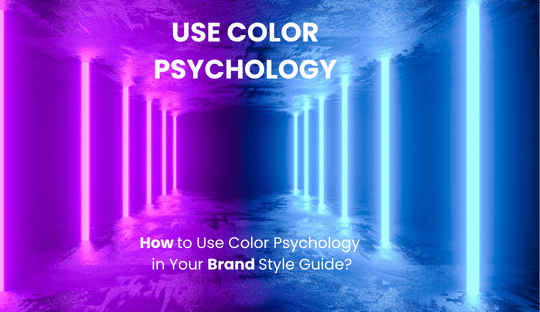
How to Use Color Psychology in Your Brand Style Guide
Understanding and utilizing color psychology is crucial for creating an effective brand style guide. The colors you choose for your brand can significantly impact consumer perception and behavior. As a leading creative brand company in Belgium, FlyKez CO specializes in website design & development, search engine optimization (SEO), brand design & brand identity, and digital marketing. This guide will explore how to effectively use color psychology in your brand style guide, ensuring your brand communicates the right message and resonates with your target audience.
The Importance of Color Psychology in Branding
Color psychology studies how colors affect human behavior and emotions. Different colors evoke different feelings and reactions, making them a powerful tool in branding. By understanding the psychological impact of colors, you can create a brand identity that elicits the desired response from your audience.
1. Choosing the Right Colors for Your Brand
The first step in using color psychology in your brand style guide is selecting the right colors that align with your brand’s values and message. Here are some common colors and their psychological effects:
- Red: Often associated with passion, excitement, and urgency. It can stimulate appetite, making it a popular choice for food brands.
- Blue: Conveys trust, reliability, and calmness. It is widely used in corporate branding and industries where trust is crucial, such as finance and healthcare.
- Yellow: Represents happiness, optimism, and warmth. It can grab attention and is often used to evoke a cheerful and energetic vibe.
- Green: Symbolizes nature, health, and tranquility. It is ideal for brands related to wellness, sustainability, and the environment.
- Purple: Associated with luxury, creativity, and sophistication. It is often used in branding for premium products and services.
- Orange: Conveys enthusiasm, creativity, and success. It can be used to create a sense of adventure and excitement.
- Black: Represents sophistication, elegance, and authority. It is commonly used in luxury and high-end brands.
- White: Symbolizes purity, simplicity, and cleanliness. It is often used in minimalist and modern branding.
2. Creating a Color Palette
Once you’ve identified the primary colors that align with your brand’s identity, it’s time to create a cohesive color palette. A well-defined color palette includes primary, secondary, and accent colors. This ensures consistency across all branding materials and helps reinforce your brand identity.
Example: A brand design company might choose blue as the primary color to convey trust and professionalism, with secondary colors like gray and white to complement the primary color and maintain a clean, modern look. Also Read About How to Rebrand Without Losing Your Core Audience
3. Applying Colors Consistently
Consistency is key in branding. Your brand style guide should provide clear guidelines on how to use the chosen colors across various platforms and materials. This includes specifications for digital and print use, such as RGB and CMYK values, hex codes, and Pantone colors.
Example: Specify the exact shades of your brand colors and provide examples of how to use them in different contexts, such as on your website, social media, marketing materials, and packaging.
4. Considering Cultural Differences
Color perceptions can vary significantly across different cultures. When creating a global brand, it’s essential to consider these cultural differences to avoid misunderstandings or negative associations.
Example: While white symbolizes purity in Western cultures, it can represent mourning in some Eastern cultures. Understanding these nuances ensures your brand resonates positively with diverse audiences.
5. Testing and Adapting
Even with thorough research, it’s essential to test your color choices with your target audience. Gather feedback and be open to making adjustments based on the responses. This iterative process ensures that your colors effectively communicate your brand message and appeal to your audience.
Conclusion
Incorporating color psychology into your brand style guide can significantly enhance your brand’s effectiveness and appeal. By carefully selecting colors that align with your brand values, creating a cohesive color palette, applying colors consistently, considering cultural differences, and testing with your audience, you can create a powerful and memorable brand identity.
FlyKez CO, as a premier brand design company and marketing company in Belgium, is committed to helping you harness the power of color psychology in your branding efforts. Visit www.flykez.com to learn more about our services and how we can support your journey towards a successful and impactful brand identity.
